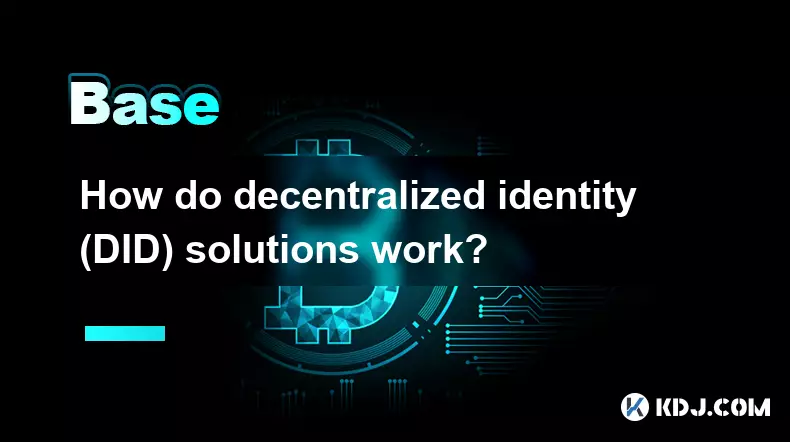-
 bitcoin
bitcoin $99177.955738 USD
-7.32% -
 ethereum
ethereum $3187.183061 USD
-12.38% -
 tether
tether $0.999809 USD
0.00% -
 xrp
xrp $2.117933 USD
-9.42% -
 bnb
bnb $906.710033 USD
-9.17% -
 solana
solana $149.367737 USD
-10.74% -
 usd-coin
usd-coin $0.999816 USD
0.01% -
 tron
tron $0.281498 USD
-0.38% -
 dogecoin
dogecoin $0.156292 USD
-8.00% -
 cardano
cardano $0.500744 USD
-10.19% -
 hyperliquid
hyperliquid $38.087358 USD
-4.58% -
 chainlink
chainlink $14.097831 USD
-8.54% -
 bitcoin-cash
bitcoin-cash $463.329916 USD
-9.22% -
 ethena-usde
ethena-usde $0.999078 USD
-0.01% -
 unus-sed-leo
unus-sed-leo $9.475862 USD
-0.79%
What is the difference between Utility Token and Security Token?
Security tokens, subject to securities laws like the Howey Test, represent investments offering returns and investor rights, unlike utility tokens which grant access to services and often face less regulatory scrutiny.
Mar 05, 2025 at 07:36 am

- Legal Framework: Security tokens are subject to extensive securities regulations, while utility tokens generally aren't, depending on their specific functionality and how they're marketed.
- Investment vs. Access: Security tokens represent an investment in a company or project, offering potential returns and investor rights. Utility tokens grant access to a product or service offered by a project.
- Regulatory Compliance: Projects issuing security tokens must comply with rigorous KYC/AML (Know Your Customer/Anti-Money Laundering) procedures and registration requirements. Utility token projects often face less stringent regulatory scrutiny.
- Token Functionality: Security tokens typically have voting rights or dividend distribution mechanisms. Utility tokens provide access to specific functionalities within a platform or ecosystem.
- Howey Test: The Howey Test is a crucial legal framework used to determine whether a token is a security. It considers investment of money, a common enterprise, expectation of profits, and efforts of others.
The cryptocurrency landscape boasts a diverse range of tokens, each with its unique characteristics and implications. Two prominent categories are utility tokens and security tokens, which often cause confusion due to their overlapping functionalities. Understanding the core differences is crucial for investors and developers alike. The primary distinction lies in their legal framework, functionality, and the relationship between the token holder and the issuing project.
Legal Framework and Regulation:The most significant difference lies in their legal status. Security tokens are considered securities under existing securities laws, like the Howey Test in the United States. This means they are subject to extensive regulations, including registration requirements with relevant authorities like the SEC (Securities and Exchange Commission). This involves rigorous KYC/AML procedures and ongoing reporting obligations. Failure to comply can result in severe legal repercussions.
Conversely, utility tokens generally fall outside the scope of securities regulations, provided they genuinely function as a means of accessing a product or service. However, this is a complex area, and the line between a utility token and a security token can be blurry, particularly if the token offers an expectation of profit based on the efforts of others. The legal landscape is constantly evolving, and regulatory interpretations can vary across jurisdictions.
Investment vs. Access:Security tokens represent an investment in an underlying asset or project. Investors purchase these tokens with the expectation of receiving financial returns, potentially through dividends, capital appreciation, or other forms of profit-sharing. They often come with investor rights, such as voting rights in company decisions.
Utility tokens, on the other hand, primarily grant access to a specific product or service offered by a project. Think of them as access keys or digital tickets to a platform or ecosystem. They don't necessarily represent an investment in the project itself, but rather a way to utilize its features. For example, a utility token might provide access to a decentralized application (dApp) or allow users to pay for services within a network.
Token Functionality and Mechanisms:The functionality of each token type reflects their purpose. Security tokens often incorporate mechanisms for dividend distribution or voting rights, reflecting their investment nature. They might represent ownership shares or debt instruments, offering holders a claim on the underlying asset's value.
Utility tokens focus on providing access to specific functionalities within a platform or ecosystem. They may enable users to participate in governance, access exclusive content, or utilize platform services. Their value is derived from the utility they provide, rather than an expectation of financial returns directly tied to the project's success.
The Howey Test and its Application:The Howey Test is a crucial framework used by regulators to determine whether an investment contract qualifies as a security. It comprises four key elements:
- Investment of money: Did the purchaser invest money or other consideration?
- Common enterprise: Is there a common enterprise between the investor and the issuer?
- Expectation of profits: Does the investment offer an expectation of profits primarily from the efforts of others?
- Efforts of others: Is the investor relying on the efforts of others to generate profits?
If all four elements are present, the investment is likely considered a security, and the token would be subject to securities regulations. This test is applied differently across various jurisdictions and has been the subject of much debate and legal interpretation in the crypto space.
Common Questions and Answers:Q: Can a token be both a utility token and a security token?A: Yes, a token can potentially exhibit characteristics of both a utility token and a security token. This is a gray area, and the legal classification depends on the specific details of the token's functionality and its marketing. Regulators will scrutinize how the token is presented and used to determine its classification.
Q: What are the implications of misclassifying a token?A: Misclassifying a token can lead to significant legal and financial consequences. If a security token is marketed as a utility token, the project may face penalties for violating securities laws. Investors may also lose their investment if the project is shut down due to regulatory action.
Q: How can I determine whether a token is a security or a utility token?A: Determining the classification of a token requires a thorough review of its whitepaper, tokenomics, and overall functionality. Legal counsel specializing in securities law is often necessary for a definitive answer, especially given the evolving legal landscape. Reviewing the token's purpose, distribution mechanism, and the promises made to investors are all key factors.
Q: Are there any ongoing legal battles surrounding the classification of crypto tokens?A: Yes, the classification of crypto tokens is a highly contested area. Numerous legal battles are ongoing worldwide, with regulators and projects frequently clashing over the interpretation of securities laws and the application of tests like the Howey Test to crypto assets. The outcome of these cases will significantly impact the future regulatory landscape for cryptocurrencies.
Disclaimer:info@kdj.com
The information provided is not trading advice. kdj.com does not assume any responsibility for any investments made based on the information provided in this article. Cryptocurrencies are highly volatile and it is highly recommended that you invest with caution after thorough research!
If you believe that the content used on this website infringes your copyright, please contact us immediately (info@kdj.com) and we will delete it promptly.
- Nano (XNO) Ignites: Volume Spike and Price Jump Signals Comeback?
- 2025-11-05 14:50:11
- Bitcoin's Bear Signal: Is a Collapse Incoming?
- 2025-11-05 14:40:15
- Nick Szabo, Bitcoin Future, and BTC: Navigating the Crypto Landscape in 2025
- 2025-11-05 14:50:01
- Bitcoin's Wild Ride: Saylor, Kiyosaki, and the Quest for $200K
- 2025-11-05 10:50:13
- Culex, Cardano, and Aster: A Crypto Cocktail of Mosquitoes, Dips, and CZ Fuel
- 2025-11-05 11:00:17
- Crypto Presales, Coin Growth, and Established Coins: Navigating the 2025 Buzz
- 2025-11-05 11:00:17
Related knowledge

How do decentralized identity (DID) solutions work?
Oct 14,2025 at 11:36pm
Understanding Decentralized Identity in the Blockchain Ecosystem1. Decentralized identity (DID) solutions are built on blockchain networks, allowing i...

What is the "halving" event for cryptocurrencies other than Bitcoin?
Oct 25,2025 at 12:19pm
Decentralized Exchanges Gain Momentum in 20241. Decentralized exchanges (DEXs) have seen a surge in trading volume as users prioritize control over th...

What is the difference between Near Protocol and Ethereum?
Oct 15,2025 at 08:01am
Near Protocol and Ethereum: Core Architectural Differences1. Near Protocol operates on a sharded blockchain architecture known as Nightshade, which al...

What does it mean for code to be "open source" in crypto?
Oct 12,2025 at 01:54pm
Understanding Open Source in the Cryptocurrency Ecosystem1. In the context of cryptocurrency, open source refers to software whose code is publicly ac...

What is the purpose of a "testnet"?
Oct 12,2025 at 09:01am
Understanding the Role of Testnets in Blockchain Development1. A testnet serves as a parallel version of a blockchain network, designed specifically f...

How to avoid phishing scams in crypto?
Oct 13,2025 at 06:18pm
Understanding Common Crypto Phishing Tactics1. Cybercriminals frequently use fake websites that mirror legitimate crypto exchanges or wallet platforms...

How do decentralized identity (DID) solutions work?
Oct 14,2025 at 11:36pm
Understanding Decentralized Identity in the Blockchain Ecosystem1. Decentralized identity (DID) solutions are built on blockchain networks, allowing i...

What is the "halving" event for cryptocurrencies other than Bitcoin?
Oct 25,2025 at 12:19pm
Decentralized Exchanges Gain Momentum in 20241. Decentralized exchanges (DEXs) have seen a surge in trading volume as users prioritize control over th...

What is the difference between Near Protocol and Ethereum?
Oct 15,2025 at 08:01am
Near Protocol and Ethereum: Core Architectural Differences1. Near Protocol operates on a sharded blockchain architecture known as Nightshade, which al...

What does it mean for code to be "open source" in crypto?
Oct 12,2025 at 01:54pm
Understanding Open Source in the Cryptocurrency Ecosystem1. In the context of cryptocurrency, open source refers to software whose code is publicly ac...

What is the purpose of a "testnet"?
Oct 12,2025 at 09:01am
Understanding the Role of Testnets in Blockchain Development1. A testnet serves as a parallel version of a blockchain network, designed specifically f...

How to avoid phishing scams in crypto?
Oct 13,2025 at 06:18pm
Understanding Common Crypto Phishing Tactics1. Cybercriminals frequently use fake websites that mirror legitimate crypto exchanges or wallet platforms...
See all articles










































































